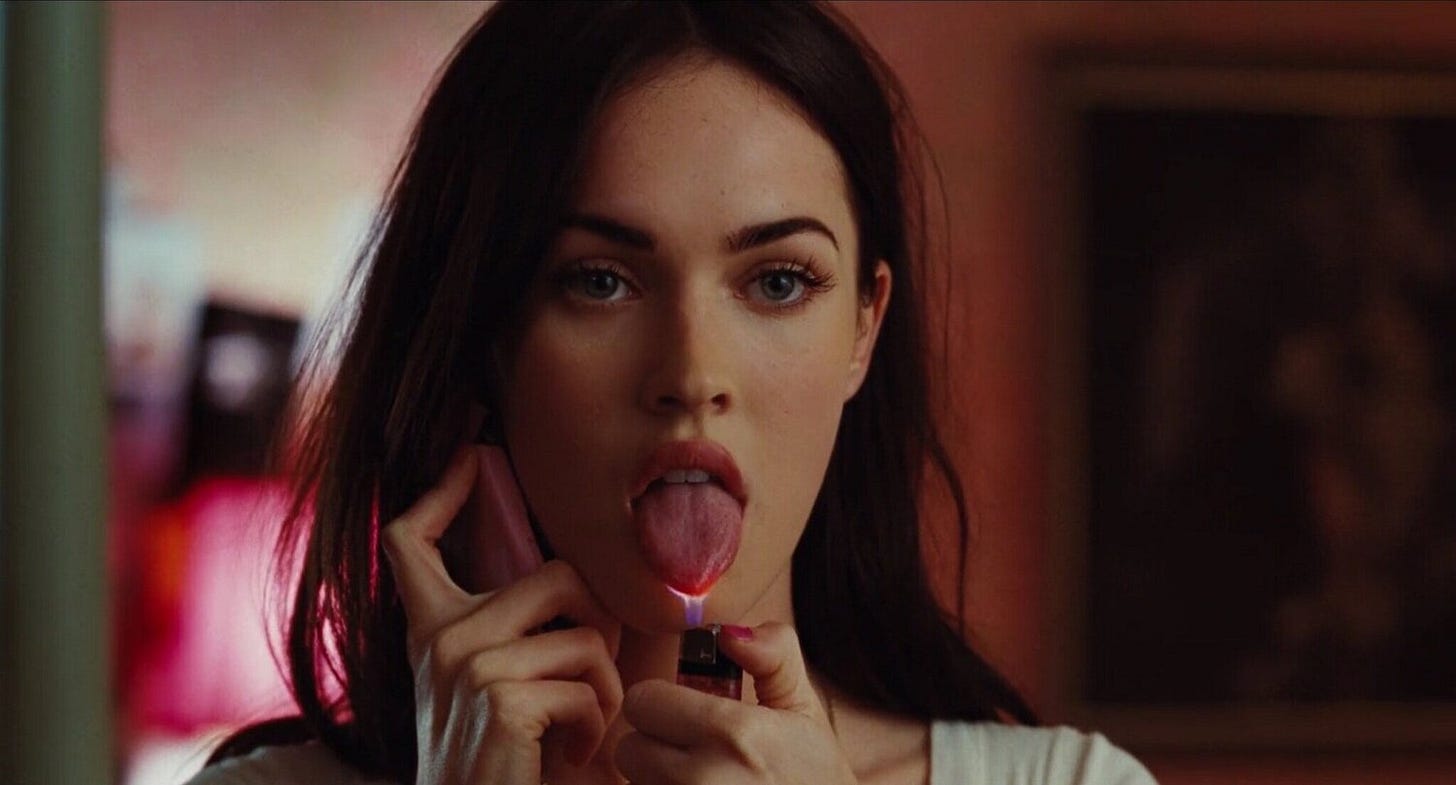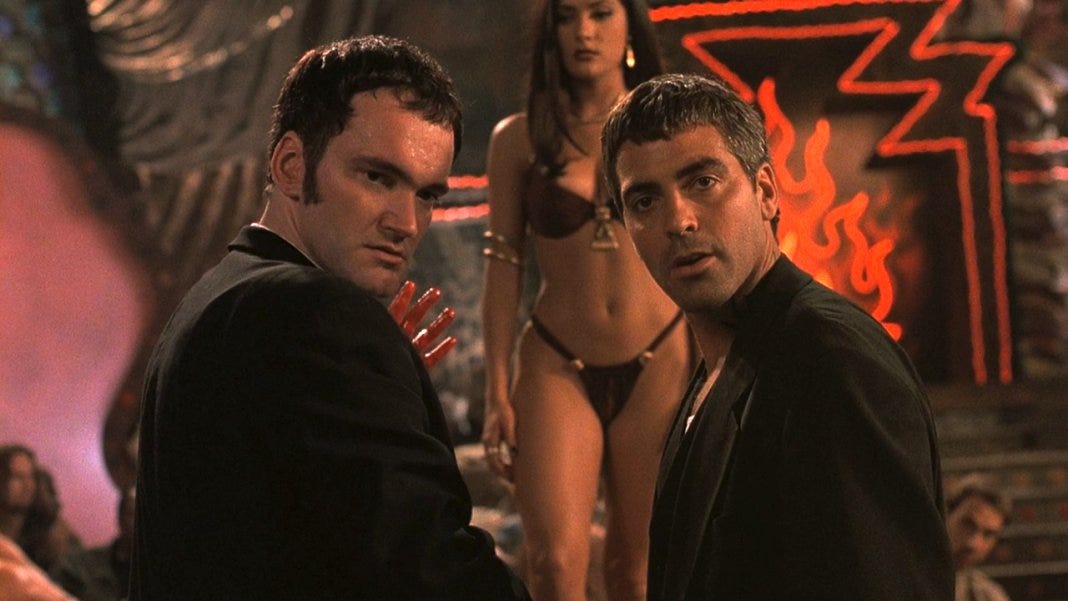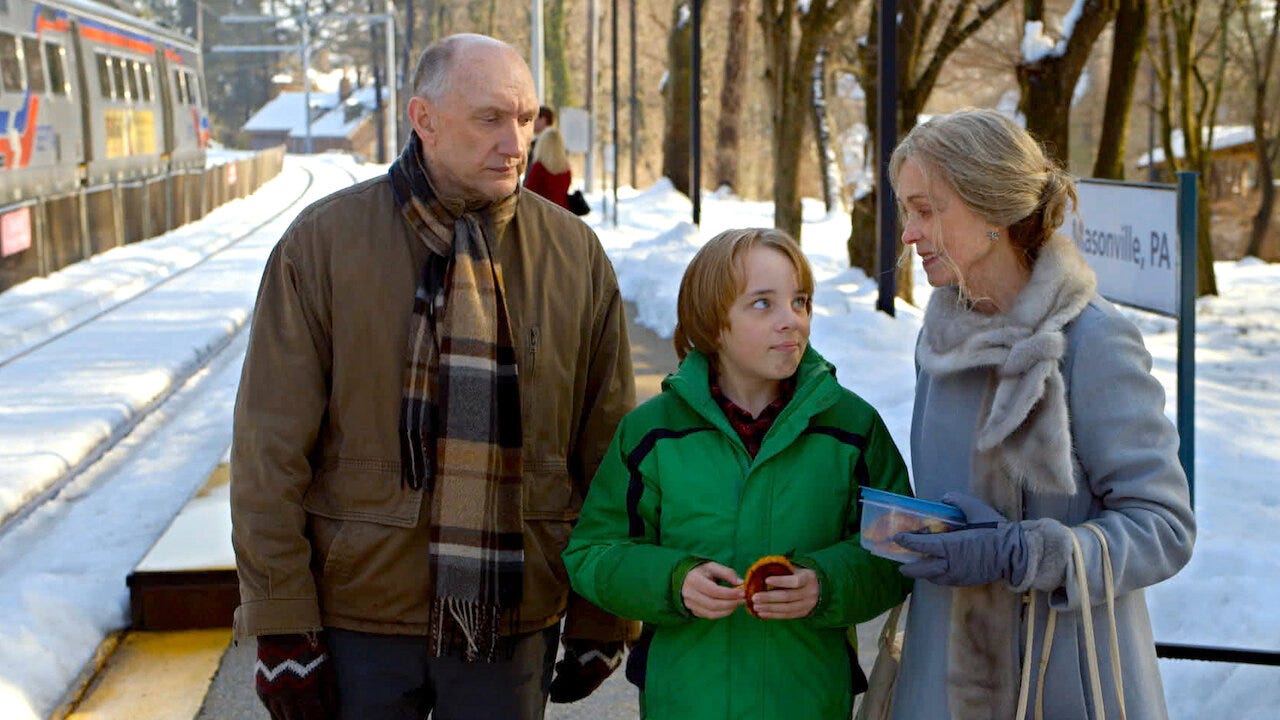Offbeat October, Vol. 2
The Film Yap offers up more unconventional picks for your October watchlist.
October, a.k.a. “Spooktober” or “#SpookySzn,” is among the Internet’s favorite times of year to recommend movies. “31 Days of Horror!” “A Fright for Every Night!” We’ve all seen these “Ultimate October Watchlists.” Many offer up a good mix of horror classics, cult hits, and streaming gems. But often, we see the same titles over and over again.
The Film Yap presents its alternative: an eclectic collection of unconventional October movie recs. Some are horror, some are not! Many are critically underrated, and most go criminally overlooked this time of year. But on some wavelength or another, they all hit the season’s vibe. With “Offbeat October,” we state our case that these picks deserve to be added to your October viewing.
Cure (1997)
Everyone loves a good outright scare this time of year, but an underrated cinematic mood for the fall is that of the dour, disturbing mystery. The descent into winter and the waning daylight hours create the perfect environment in which to wallow in a downer of a story about people falling into rabbit holes of crime and sadism. Seven and Zodiac come to mind as perfect examples of this autumn atmosphere of melancholic murder.
But Kiyoshi Kurosawa’s Cure fits the mold perhaps more than any, with its blurring-together of psychosis and hypnosis lending the film a subtle air of supernaturality that other murder mysteries like it tend to lack.
We follow a righteous but world-weary Detective Takabe (Koji Yakusho) as he investigates a string of murders connected by a few mystifying similarities. Each victim is killed the same way, but by different people. Each perpetrator is found near the scene of their crime, readily admitting to what they’ve done, but unable to explain why they did it. One man, a vagrant amnesiac named Mamiya (Masato Hagiwara), seems to connect them all, having met each perpetrator shortly before their heinous acts.
Be warned: Cure is hardly a thrill ride, so don’t expect hectic foot-chases or grandiose confrontations between cops and killers. Kurosawa’s film is a far more contemplative film; an observation of human brutality, full of seemingly mundane environments captured by a cold and detached camera. But layered within its grey concrete walls and dingy, fluorescent glows is a meticulous, harrowing depiction of the dark potential that lies within us all.
Cure is less likely to scare your pants off in the moment than it is to slowly wriggle under your skin and fester in your mind for hours, even days afterward, revealing its occupancy in your consciousness only once you realize that you’ve been thinking about it, seeing the world just a little bit differently, ever since the credits rolled.
It’s like being hypnotized.
Cure can be streamed from the Criterion Channel, which has a 14-day free trial.
by Andy Carr
Jennifer’s Body (2009)
Jennifer’s Body, directed by Karyn Kusama and written by Diablo Cody of Juno fame, has become one of those movies from the 2000s that started with a bad reputation, known for its financial and critical flop in 2009, and has since been remembered as a cult classic.
Do I like it from a wholly new perspective, after watching it for the first time since I was 13? Not necessarily, but I now see where it’s more than just Jennifer Check’s desire for human blood (her male classmates, specifically) after a traumatic experience. It’s been an annual Halloween watch for horror fans who’ve discovered this or found a new appreciation, since it’s a horror-comedy with an unconventional female empowerment angle that gained more relevance after the #MeToo movement.
I never realized how far ahead of its time a story like this was, with this female character turning into a monster after an indie band sacrifices her, and the terrifying implications of why she's possessed. I couldn't believe 20th Century Fox's poor marketing to make it “Twilight for boys."And while this has Megan Fox in the lead, I’d argue Amanda Seyfried as Jennifer’s best friend Needy gave the standout performance, which made me want to see more of her in the genre.
Is Jennifer’s Body worth adding to your Halloween watch list? It depends. Personally, I think of it as simultaneously mediocre and clever. However, despite having mixed thoughts on it, time will consider it a guilty pleasure. But if you haven’t watched it in years, I’d say it’s worth giving another shot to see if you find a new understanding of what Kusama and Cody intended to make. There’s more to this than sex appeal when it can gear toward both genres for good popcorn fun.
Jennifer’s Body is available to stream from Prime Video, or for rent on Apple TV, Amazon, or Vudu.
by DC Bolling
From Dusk Till Dawn (1996)
As a 14-year-old boy, I saw From Dusk Till Dawn two and a half times in the theaters. (My genetics causing early onset puberty and uncaring Goodrich Quality Theaters employees insured my entrée!) I was already very much into the works of Quentin Tarantino (who writes, produces, and acts in the film) and FDTD director Robert Rodriguez. (Thanks for taking 13-year-old me and my 12-year-old younger brother to see Desperado five months earlier, Mom! There’s nothing like sitting beside your mother while Antonio Banderas runs a spur down Salma Hayek’s bare butt.) I was also already very much into vampire flicks thanks to 1987’s The Lost Boys, which I’d seen at least a dozen times at this point.
During my third screening at a dollar theater, the film broke and burnt up just as the Titty Twister’s staff were turning into vampires. A fellow patron also rolled a beer bottle down the center aisle. I was so enamored by and enthused about the picture that I did a presentation about it for my freshman Honors English class. (Be still your beating hearts, freshmen girls of William Harrison High School circa 1996 … NOT!)
I thought FDTD was the coolest thing I’d ever seen as a 14-year-old … part of me still does. It’s half-Tarantino crime picture and half-vampire freak-out … complete with gnarly makeup effects from the wizards at KNB EFX Group. Robert Kurtzman, the “K” in KNB, dreamt up the movie’s story. (Unlike many moviegoers, I was hip to the movie’s mid-point tonal switcheroo as I avidly followed its production in Fangoria magazine.) It’s a time machine that makes this almost-41-year-old feel like a 14-year-old all over again.
FDTD is available to watch on Showtime and to stream on Hulu, Prime Video, YouTube TV, Pluto TV, and Showtime Anytime.
by Alec Toombs
A Girl Walks Home Alone at Night (2014)
Every year, families and friends gather to rewatch beloved horror and Halloween classics. But if you’re are someone who is looking for a new title to add to your yearly tradition, look no further than Ana Lily Amirpour’s A Girl Walks Home Alone at Night. This Iranian vampire western is a great way to get all of the nostalgic black-and-white aesthetics of classic monster movies, while simultaneously being a very refreshing and subversive take on the vampire mythos.
Cementing itself in the “strange western” subgenre, the fictional ungoverned and impoverished Bad City, Iran, shows the audience just how lawless it can be. Drugs run rampant, dry river beds have become mass graves, and oil rigs are sucking the last remaining signs of life from the community. The two main characters that we focus on are Arash and “The Girl”. Both are responsible for preying upon others for their own self-preservation. In order to provide for himself and his drug-addicted father, Arash must take to the streets and sell drugs within his broken city. The Girl is a lonely woman who, coincidentally, is also a vampire. A chador wearing, skateboard-shredding, music-jamming vampire, who just so happens to hunt and kill terrible men in the area. The story follows the two as they meet and fall for each other in a suspenseful, slow-burn journey.
Amirpour’s style is both a love letter to traditional storytelling and a completely fresh subversion of what audiences have come to expect. Shot compositions allude to so much more than what’s on the surface, which is why a yearly rewatch would continue to be an immersive and spooky Halloween tradition.
The choice to have the film in black-and-white is reminiscent of Dracula and Nosferatu, and allows for some beautiful photography from Lyle Vincent. The way the oil rigs are filmed is deliberate, as they enter the frame to look like vampire fangs, sucking the black gold out of the ground. The imagery supports the idea that the vampire in this story isn’t doing anything uniquely bad in this town that others aren’t.
Amirpour’s subversions of the female experience and what we traditionally know of vampires is intriguing. Traditionally, male vampires are portrayed as hypnotic, wealthy, and high-profile. They would never be perceived as prey to lure in victims, and a large part of their threatening aura stems from traditional expectations of masculinity. The title of the film would suggest that The Girl would be helpless wandering through the night, when, in fact, she’s the one who is hunting, taunting, and playing with her soon-to-be meals.
While she's a brutal killer, her femininity subverts audience expectations. Though she goes about her hunting in the most ethical way a vampire could, she still feels remorseful and ashamed of her actions. Instead of manipulating people into falling in love with her, like a lot of vampires in pop culture, she genuinely falls in love with a kind boy. Watching The Girl grapple with her curse is gripping—not knowing if she can allow herself to get past her temptations to find love, or roam the earth lonely forever.
A Girl Walks Home Alone at Night is currently available on the indie horror streaming service Shudder. The film is also available to rent or buy on Prime Video.
by Jackson Mahuron
The Visit (2015)
There was a time where M. Night Shyamalan was the butt of a lot of jokes. Once one of the most exciting directors in the industry with hits like The Sixth Sense, Unbreakable, and Signs, Shyamalan became critical poison with clunkers like The Last Airbender, After Earth, and the so-bad-it’s-good classic The Happening. When The Visit arrived in September 2015, I feel many people were ready to trounce on the film.
The Visit is an absurd and bonkers found-footage horror(-comedy?) that let the world know Shyamalan still had it—and this time, he was in on the joke. We follow brother and sister Becca and Tyler (Olivia DeJonge and Ed Oxenbould) who are visiting their grandparents for the very first time while their stressed-out single mother (Kathryn Hahn) goes on a much needed vacation with her new boyfriend. Things are off from the very moment the siblings meet their Nana and Pop Pop (Deanna Dunagan and Peter McRobbie); they seem cold and distant and grow increasingly neurotic. Things escalate even more at night, as Nana starts exhibiting symptoms of sundowning, running around the house naked, vomiting profusely, and scratching the walls like an animal.
With The Visit, Shyamalan strikes the perfect balance between making the audience laugh and squirm in their seats, sometimes at the same time. In the hands of another director, or if it were to be edited in another way, it could have been very easy for The Visit to feel like a straight-up parody, but the final result is one of the best true horror-comedies to come out in the 2010s. If straight-up horror isn’t your forte, or you need something spooky that can still make you laugh, The Visit makes for a perfect watch this Halloween season.
It can be rented from Prime Video, Vudu, Redbox, or Apple TV.












